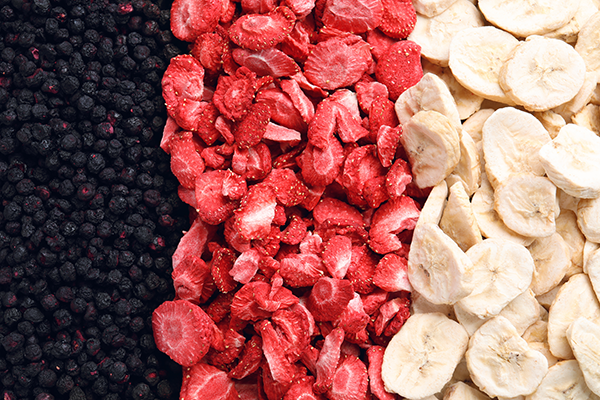Freeze Drying Technology
Freeze drying is a process through which 99% of the moisture is removed from an object, allowing it to be preserved more easily and for much longer than if it were in its original state. Freeze drying techniques can be applied to many things from food to bacteriophages and soil. By freeze drying food, it has the potential of alleviating food waste and nutritional deficiencies. Fresh and healthy meals, fruits, and vegetables can be preserved for upwards of 20+ years with little to no loss of nutritional quality. Thus, nutrient dense foods can be stored and transported easily without refrigeration. The transportation of food to areas that need it is a major cost that typically limits the amount of food that can be delivered. The process of freeze drying actually makes food much lighter, which makes it easier to transport more at once. This means that more food can be delivered to people in need, and less trucks could be used, leading to a decrease in the carbon footprint of food delivery. By freeze drying bacteriophages, phages can be preserved longer without freezers allowing for their more efficient use and distribution to hard to reach places. By freeze drying soil, soil scientists may be able to better understand the complex microbial ecosystems found within soil, as microbial communities typically immediately destroyed during soil research may instead be preserved and observed. We are currently investigating the many applications of freeze drying technologies and evaluating potential partners for implementing this technology as a solution to food waste, soil scientific inquiry, and antibiotic resistance.
Our staff is currently researching these subjects and seeking to meet scientists studying the topics.
What we’ve been reading on the subject: (1) Islam, K., Weil, R., Mulchi, C. et al. Freeze-dried soil extraction method for the measurement of microbial biomass C. Biol Fertil Soils 24, 205–210 (1997). https://doi.org/10.1007/s003740050232; (2) William A. Clark, Dorothy Geary, Preservation of bacteriophages by freezing and freeze-drying, Cryobiology, Volume 10, Issue 5, 1973, Pages 351-360, ISSN 0011-2240, https://doi.org/10.1016/0011-2240(73)90057-6.; and (3) Freeze Drying Lessens a Farmer’s Financial Risk Plus More by Ernie Watson available at https://www.rd.usda.gov/newsroom/success-stories/freeze-drying-lessens-farmers-financial-risk-plus-more.

